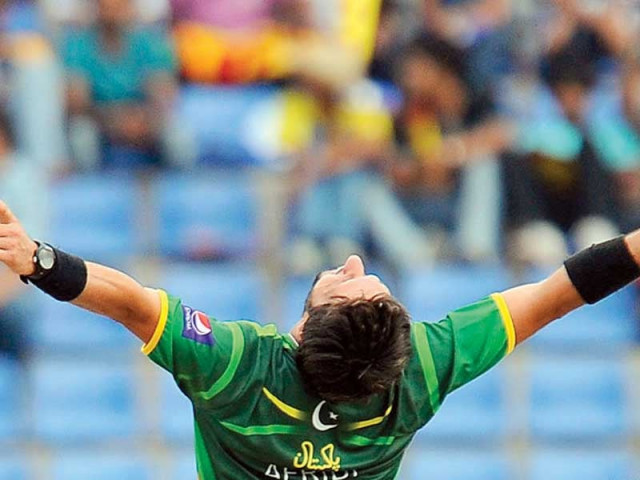Lord’s, 1982. When Imran Khan threw the ball to Mudassir Nazar, a collective groan went up. England were nine without loss as I watched sitting on the rickety benches positioned on the cover boundary. Sarfaraz Nawaz had gone off from a suspected side strain.
Nazar, as he ran into bowl, looked like Shoaib Akhtar from where I was. I saw him bowl, saw the batsman leave and Wasim Bari dive behind the stumps but I didn’t see the ball. Suddenly, England were nine for three – Randall, Alan Lamb and David Gower all back in the hut. Pakistan went onto win that match by 10 wickets.
Earlier, in January 1977, the team had to make 32 runs as the whole of Pakistan tuned into proceedings from the Sydney match. There was Majid Khan facing Dennis Lillee. I couldn’t see the ball as Majid was beaten. Sadiq Mohammad and Zaheer Abbas were already dismissed and Lillee had hit Majid on the head. I remember shaking – was it the cold or was it the tension, I didn’t know. Another bouncer, but this time Majid deposited it into the stands. Pakistan won by eight wickets.
Things have changed now. Some changes are visible – the advent of Twenty20. But the neutral umpires (you have to watch an Indian umpire in Bangalore 1987 to appreciate that), the helmets and the pitch covers too; the uncultured slash from Virendar Sehwag over third-man or a Shahid Afridi miss-hit for six.
When I was in school, I was expelled from the second-XI for lofting the ball twice in an over. I’d spend hours in front of a small radio, tuning into Test Match Special. There were no talks of money, no fixing issues but just pure love for a game of nobility. No endless analysis and, above all, no Facebook or Twitter ‘experts’ sharing their views.
The game has moved on a lot from the days when the world was still young. My first experience of National Stadium Karachi was the same as Lord’s: No chairs, just steps and no shamiana cover either. It was tough going. You dare blink risking missing a wicket or a six. But it was spontaneous and passionate. Today we see replays but can’t appreciate the game. The serious spectator has disappeared with the space taken up by the Twenty20 enthusiasts. Even at a run-a-ball required, players and spectators still want to see a slog. The ‘we will make them in singles’ just doesn’t exist anymore.
It was a quiet and non-commercial game back in the day, before Kerry that is. With money came great things like affluence, viewership, fairer umpiring, innovation and improved fitness. Experience was made to last and the spectacular became imperative. Pitches were toned down, the game shifted towards batting. Tail-enders started hooking and pulling without fear. Fitness improved careers and ‘gods’ were created, greater than the game itself.
Cricket died and was cremated. Now we have less skilled players and, at times, it becomes excruciating to see batsmen not capable of concentrating or being squared up. So while the spectator experience has improved considerably, the quality has gone out of the game.
I lament for the game which I loved but there are very few who hear and understand.
Read more by Sarfaraz here or follow him on Twitter @Sarehman
Join us on Facebook for blog updates and more!
When cricket was white and pure
I wonder of the days when cricket was about sheer passion and when players were greater than the game itself.



COMMENTS
Comments are moderated and generally will be posted if they are on-topic and not abusive.
For more information, please see our Comments FAQ